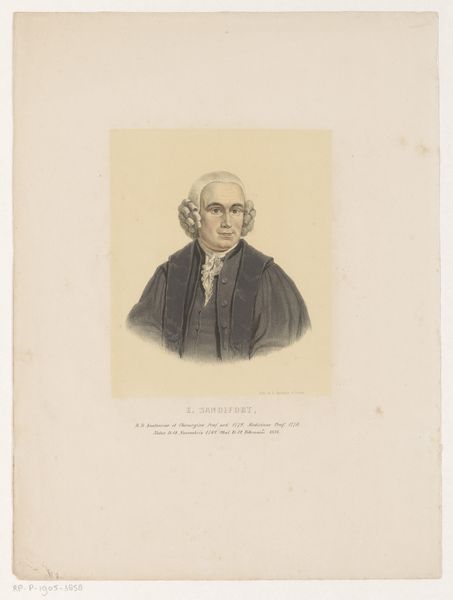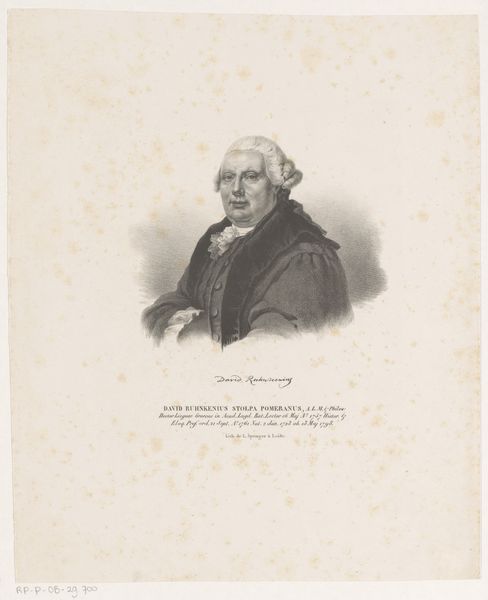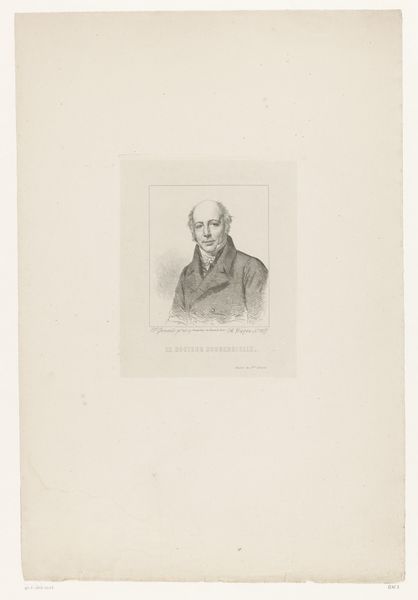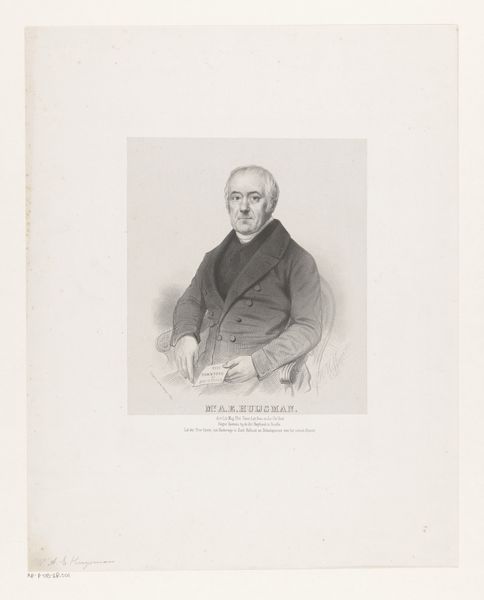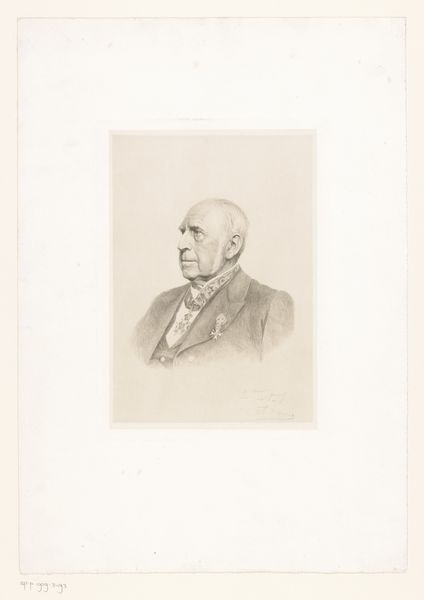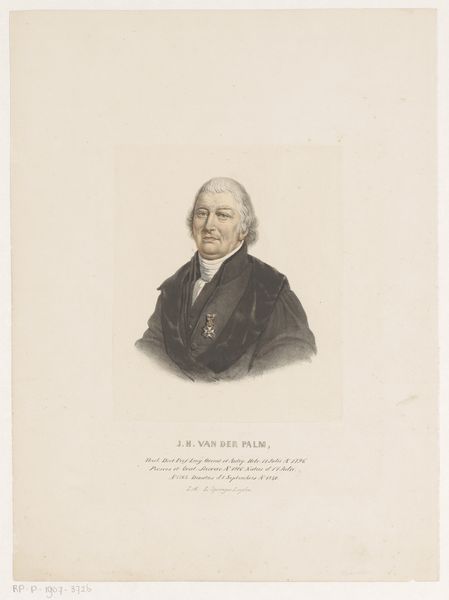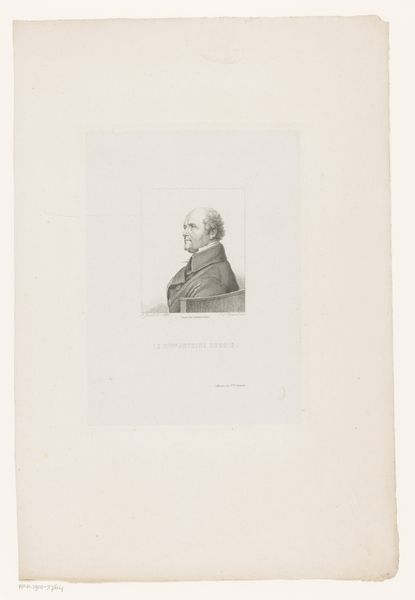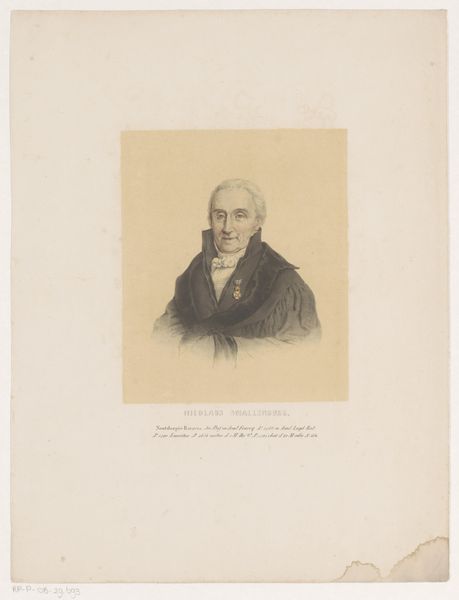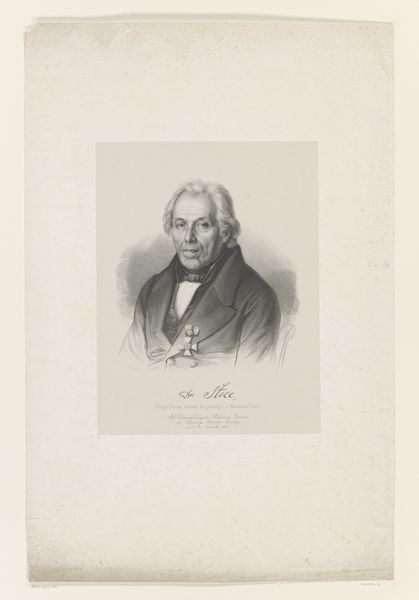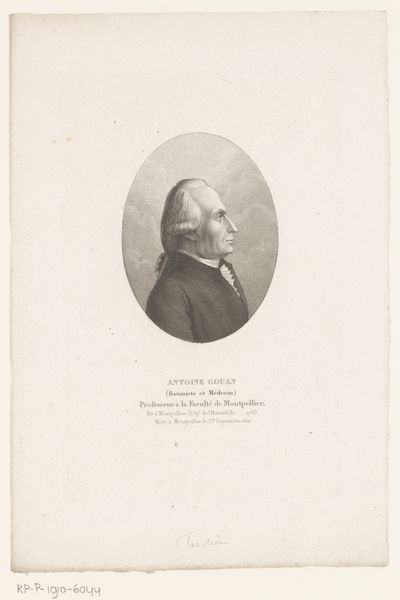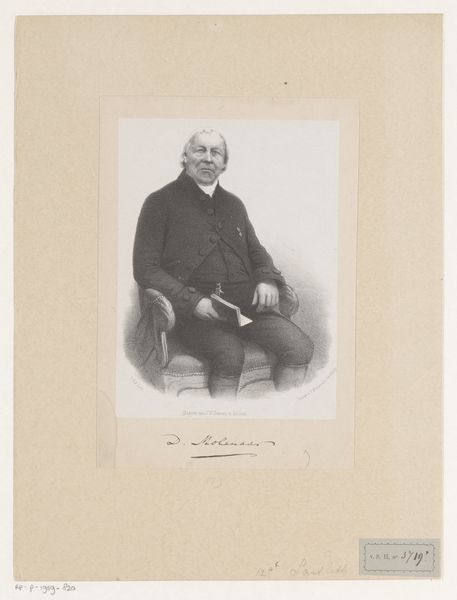
drawing, graphite
#
portrait
#
drawing
#
neoclacissism
#
graphite
#
realism
Dimensions: height 348 mm, width 255 mm
Copyright: Rijks Museum: Open Domain
Editor: This is a graphite drawing called "Portret van Meinard Tydeman," created around 1850 by Leendert Springer. I'm struck by the formality of the subject. It makes me wonder about his social standing and what kind of role portraiture played in 19th-century Dutch society. How would you interpret this work? Curator: Well, considering this portrait through a historical lens, several things stand out. The subject's clothing, that severe black coat and meticulously styled wig, clearly mark him as a member of the establishment. The very act of commissioning a portrait was a statement of status and self-importance during this period. The portrait aimed to project a specific image, a desired persona. Editor: So, it's less about capturing a true likeness and more about constructing a public image? Curator: Precisely! Think about the role of institutions like the Royal Academy at the time. They promoted particular styles and conventions, which artists like Springer would have absorbed. This portrait probably reflected the artistic taste and social values of that time, it tells us as much about Tydeman as the system of power that supported him. Notice how there's little emotional affect on display. Editor: That makes sense. So the portrait not only presents an individual but also reinforces broader social structures. I never thought about portraiture in that light before. Curator: It's all about the context, and the political dimensions are what’s interesting! What this portrait 'does' in a social arena and what values were promoted within it, matters. Editor: This has completely reshaped my view of this drawing, realizing how deeply ingrained historical and social contexts are. Curator: Agreed, it allows us to unpack the nuances of both individual and collective identities.
Comments
No comments
Be the first to comment and join the conversation on the ultimate creative platform.
